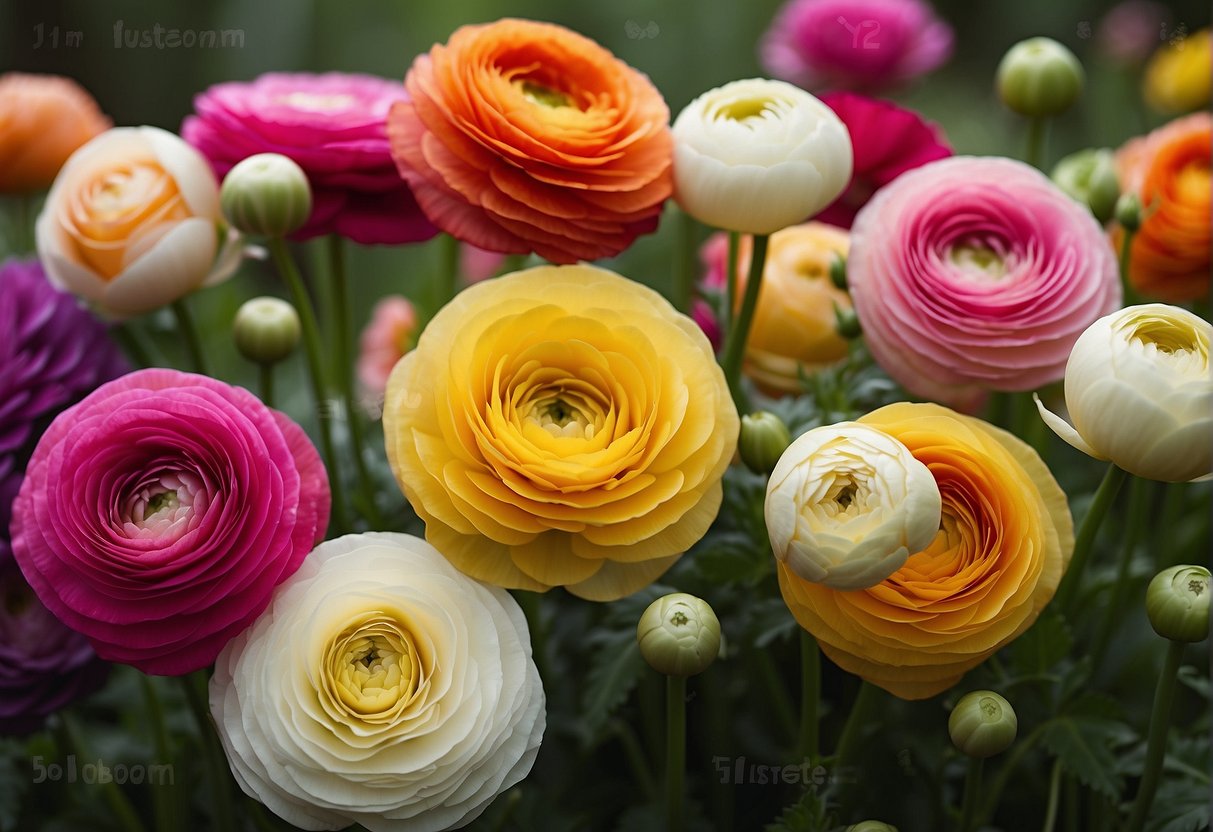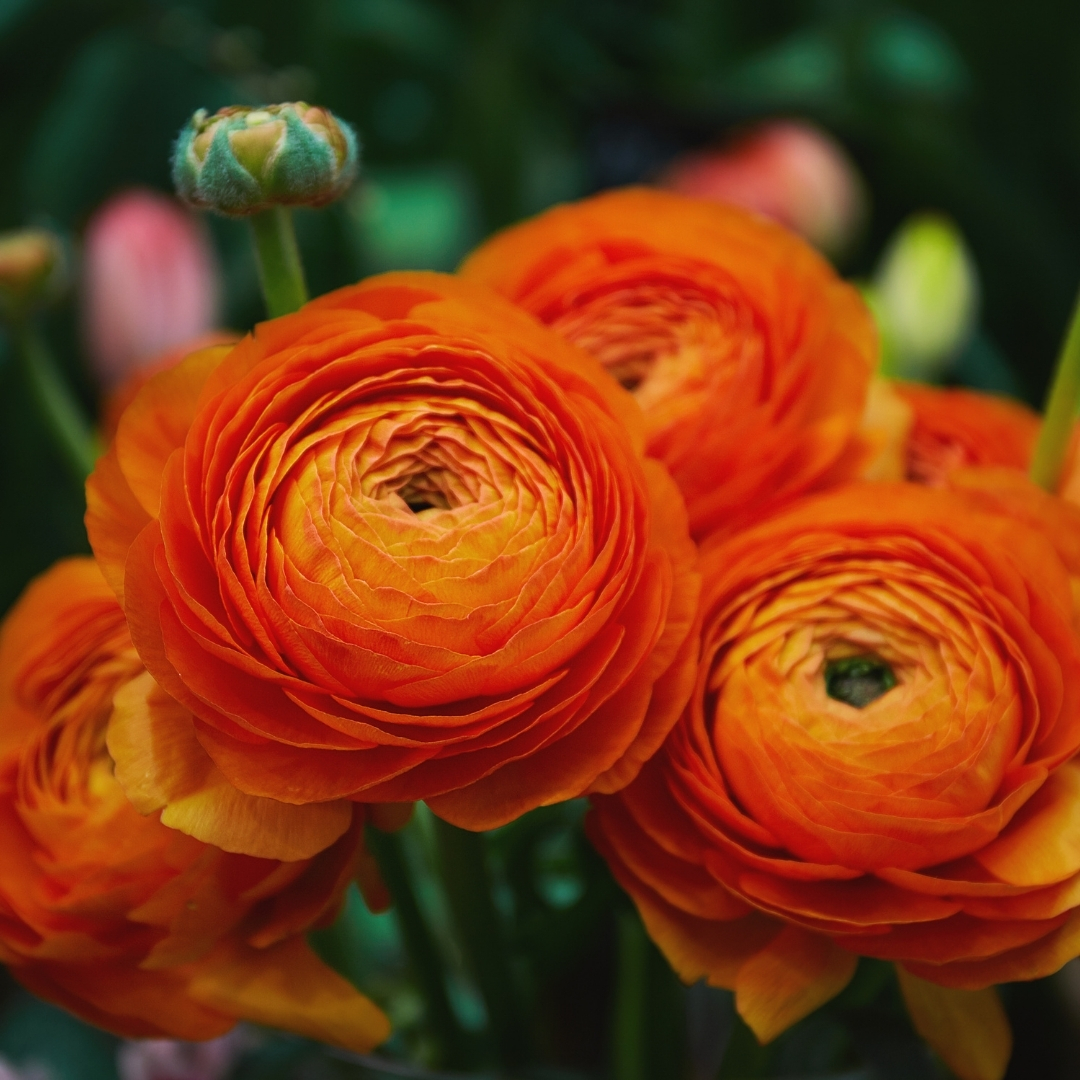Ranunculus flowers, often referred to as buttercups, are a beloved choice for gardeners due to their vibrant blooms and rich colors. These perennial plants are native to the Mediterranean region and thrive in a variety of garden settings. With the right care and attention, you can enjoy a stunning display of ranunculus flowers in your garden. This article provides essential tips for planting and caring for ranunculus flower seeds to help you achieve the best results.
Understanding Ranunculus: An Overview

Ranunculus species, particularly Ranunculus asiaticus, are popular for their large, multi-petaled flowers that come in a spectrum of colors, including white, yellow, pink, red, and purple. These flowers are not only visually appealing but also attract pollinators like bees and butterflies, making them a valuable addition to any garden.
Ranunculus plants prefer cooler temperatures and typically bloom in spring, making them ideal for planting in the fall or early spring, depending on your climate. Here’s what you need to know about successfully planting and caring for ranunculus flowers.
Preparing for Planting

Before planting ranunculus seeds, proper preparation is essential to ensure healthy growth. Here are the key steps:
- Choose the Right Location: Ranunculus flowers prefer well-drained soil and full sun to partial shade. A location that receives at least 6 hours of sunlight daily is ideal.
- Soil Preparation: Ensure the soil is rich in organic matter. You can achieve this by mixing in compost or well-rotted manure. Aim for a soil pH between 6.0 and 7.0 for optimal growth.
- Check the Climate: Ranunculus thrives in cooler temperatures, making them suitable for USDA hardiness zones 8-10. If you live in a warmer climate, consider planting them in the fall to avoid the hottest months.
Planting Ranunculus Seeds

Once you’ve prepared the soil and chosen a suitable location, it’s time to plant your ranunculus seeds. Follow these steps for successful planting:
- Timing: Plant ranunculus corms (the bulb-like structures) in the fall for spring blooms or in early spring for later blooms. If you’re planting seeds directly, do so about 6-8 weeks before the last frost date in your area.
- Planting Depth: When planting corms, place them about 1-2 inches deep in the soil, with the pointed end facing up. For seeds, scatter them on the surface and lightly cover with soil.
- Spacing: Space corms about 6-8 inches apart to allow for adequate air circulation and growth. If planting seeds, thin them out after germination to avoid overcrowding.
Watering and Fertilization
Proper watering and fertilization are crucial for the healthy growth of ranunculus flowers. Here’s how to ensure your plants receive the right amount of moisture and nutrients:
- Watering: Ranunculus prefers consistently moist soil, but overwatering can lead to rot. Water the plants thoroughly after planting, then allow the soil to dry slightly between waterings. During dry spells, water more frequently.
- Fertilization: Use a balanced, water-soluble fertilizer every 4-6 weeks during the growing season. A fertilizer with an N-P-K ratio of 10-10-10 is ideal. Avoid high-nitrogen fertilizers, as they can promote leaf growth at the expense of flowers.
Pest and Disease Management
:max_bytes(150000):strip_icc()/GettyImages-678820905-59715b156f53ba00105bfc2a.jpg)
Like all garden plants, ranunculus flowers can be susceptible to pests and diseases. Here’s how to keep your plants healthy:
- Common Pests: Watch out for aphids, spider mites, and thrips. You can manage these pests by using insecticidal soap or neem oil.
- Disease Prevention: Fungal diseases like botrytis can occur in damp conditions. Ensure proper air circulation by spacing plants adequately, and avoid overhead watering to reduce humidity around the plants.
- Regular Monitoring: Check your plants regularly for signs of pests or disease, and take immediate action if you notice any issues.
Post-Bloom Care and Maintenance
After your ranunculus flowers have bloomed, it’s essential to provide proper care to prepare for the next growing season:
- Deadheading: Remove spent flowers to encourage more blooms and prevent the plant from diverting energy to seed production.
- Foliage Care: Allow the foliage to die back naturally after blooming; this will enable the plant to store energy for the next season.
- Storage: If you live in a region with harsh winters, consider lifting the corms after the foliage has died back. Store them in a cool, dry place until the next planting season.
Case Studies: Successful Ranunculus Gardens

Several gardeners have successfully cultivated ranunculus flowers, demonstrating the effectiveness of proper care techniques:
- Jane’s Urban Garden: Jane, a city gardener, planted ranunculus in containers on her balcony. By using high-quality potting soil and ensuring proper drainage, she achieved a stunning display of colorful blooms throughout spring.
- Tom’s Community Garden: Tom, a member of a local community garden, followed the recommended guidelines for sunlight and watering. His ranunculus flowers flourished, providing a vibrant attraction that drew in pollinators and fellow gardeners.
Conclusion: Your Path to Beautiful Ranunculus Blooms

Planting and caring for ranunculus flower seeds can be a rewarding experience, resulting in a stunning display of color and beauty in your garden. By understanding the needs of these plants—from soil preparation and planting to watering, fertilization, and pest management—you can create an environment that fosters their growth. Remember to monitor your plants regularly and provide care even after the blooms fade.
Whether you’re an experienced gardener or a beginner, following these tips will help you cultivate beautiful ranunculus flowers that will brighten your garden and attract pollinators. Enjoy the journey of nurturing these delightful blooms, and may your garden be filled with the vibrant colors of ranunculus!